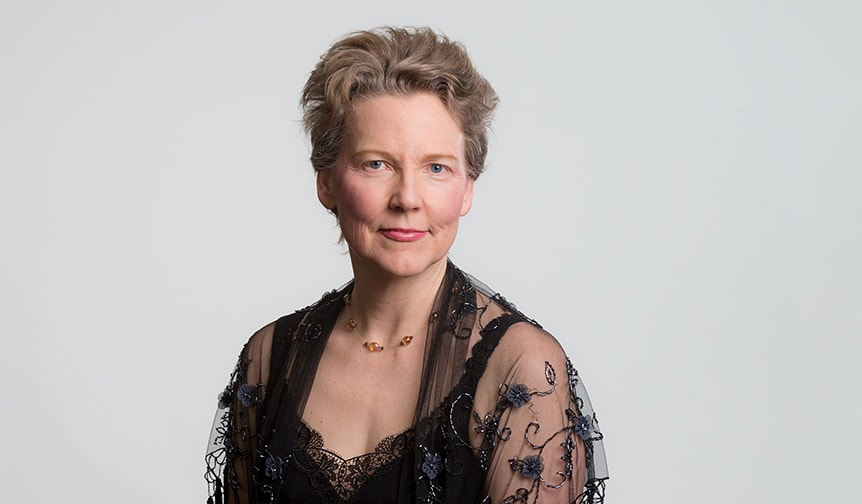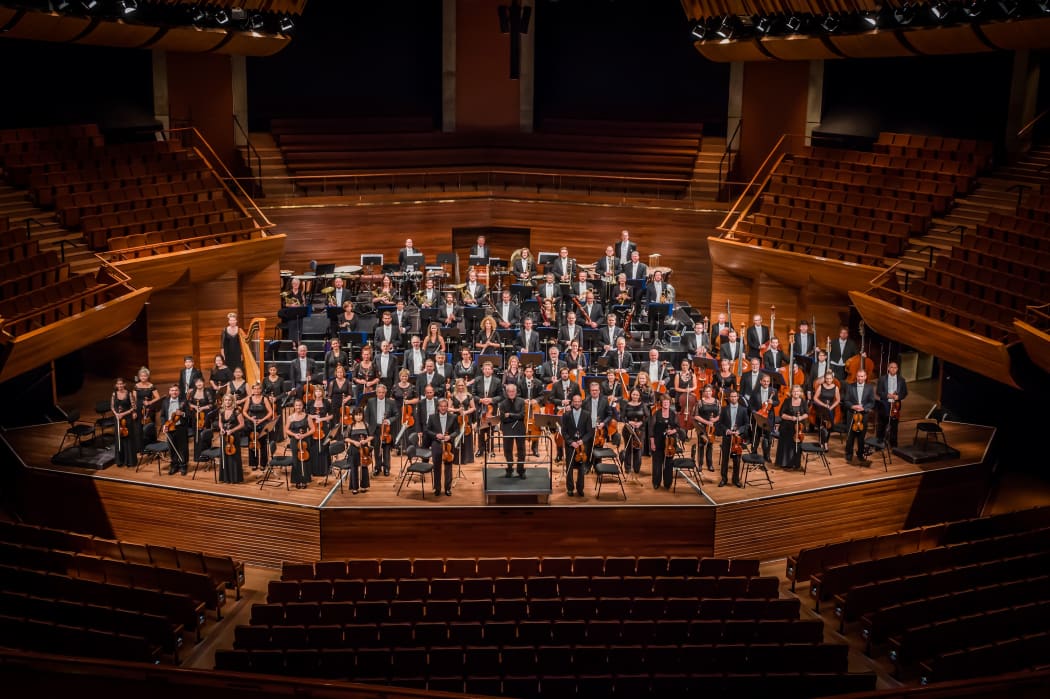The harp has a perceived aura of being feminine, but as the NZSO’s harpist proves, it’s not entirely the case.
On international women’s day Carolyn Mills popped into the studio to discuss the physicality of the harp, why she thinks the NZSO is standing by female musicians and what she’s looking forward to about playing the Star Wars score.

NZSO harpist Carolyn Mills Photo: Stephen A'Court Photography
In the 18th and 19th centuries, musical accomplishment was an important part of a young lady’s life and education.
The piano, naturally, but also the harp. “Not only is this beautiful and ancient instrument easy to master, but it also allows women to show off their pretty hands, the nimbleness of their fingers, and even their dainty little feet and ankles.”
New Zealand Symphony Orchestra’s principal harpist Carolyn Mills laughs at the suggestion of the harp being dainty and easy to play. “I think it’s absolutely true!” she jokes. “It’s a piece of cake!”

New Zealand Symphony Orchestra 2016 Photo: Stephen A'Court
She’s thrilled to be the principal harpist for a progressive orchestra, which embraces people of all walks of life. According to the NZSO the gender split is nearly 50/50.
“I’ve always felt that NZSO has always been a very equal opportunity place to work, certainly not one of those orchestras that only hire men or throw backs to the past,” Carolyn says. “We had a wide mix of gender, nationality and age.”
She sees NZSO as being quite progressive and ahead of the curve compared to many orchestras around the world. Just recently the Vienna Radio Symphony Orchestra appointed Marin Alsop as the artistic director. It’s the first time a woman has held that role. Other orchestras and festivals – including The Proms - have set specific targets to reach 50/50 gender split in line ups by 2022.
“This is not ancient history. It’s relatively recent history in some parts of the world,” Carolyn says about the lack of gender diversity in orchestras. “But New Zealand is a pretty egalitarian place. It’s one of the wonderful things.”
The harp has been perceived as a feminine instrument and easy to play, but because of its size and structure playing can be physically demanding, particularly if the work is harmonically interesting. “Your hands are always working against gravity,” she says. “You never have something to rest on. About 90 percent of the time you’re in the air between strings.”
While many harpists are women, the perception that it’s just an instrument for women is changing. “Some of the most wonderfully interesting and dramatic harpists have been men. They maybe a minority but they are part of the family,” she says. “Whoever you are … you need a lot of strength.”
Sometimes the harp might not even get noticed, but for Carolyn it’s about being part of an orchestral texture “[The harp] might only be the spice,” she says. “But without the spice it’s not the same dish at all!”
Quick questions with Carolyn Mills
1. What’s the story behind your harp?
It was built by Whangarei harp maker Kim Webby. It was the first concert sized harp he had made. I asked if I could lend it to me for a performance. When I played it I couldn’t believe what I was experiencing. It was the just most beautiful sound. Clear, responsive and even. It was a joy. After a few days of playing I had to sell everything and buy this harp!
2. What are some of the more interesting comments you’ve had about your harp?
A number of years ago I did school concerts. A seven or eight year old told me it looked like a dolphin jumping. I thought it was beautiful. It relates to those curves in nature. The harp has the shape because of physics.
3. Why do harpists like Mahler?
Where would Mahler be without the harp! He often uses the haro as a foundation for the fundamental idea he’s trying to get through. He also uses the lowest strings in the harp. Many composers don’t use those notes effectively. These aren’t the equivalent of the piano notes. When Mahler he uses them perfectly. He clears out the rest of the instrumentation and gives space for the harp to ring.
4. You’re playing in the NZSO’s performance of Star Wars. What do you think of the score? And most importantly what costume are you going to wear?
The music was ground breaking at the time. There’s a lot of work for harp. A lot of it you won’t hear because it blends into the texture. A few places the harp takes a moment and sets up a scene, for example the appearance of the princess. Moments like that you get a bit of a sparkle. Regarding a costume… I’m going as an orchestral player! But I’d love to wear a Chewbacca costume!

